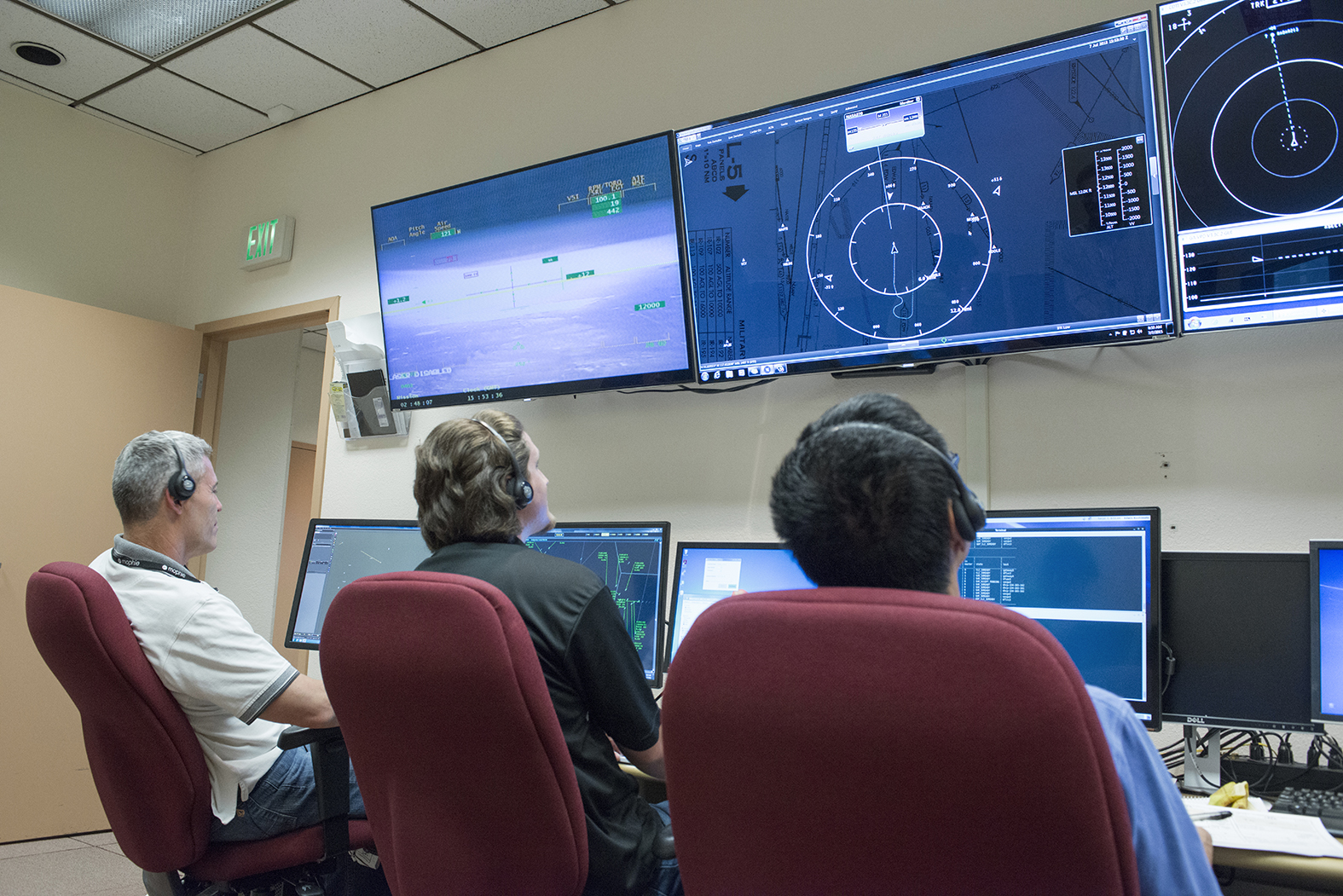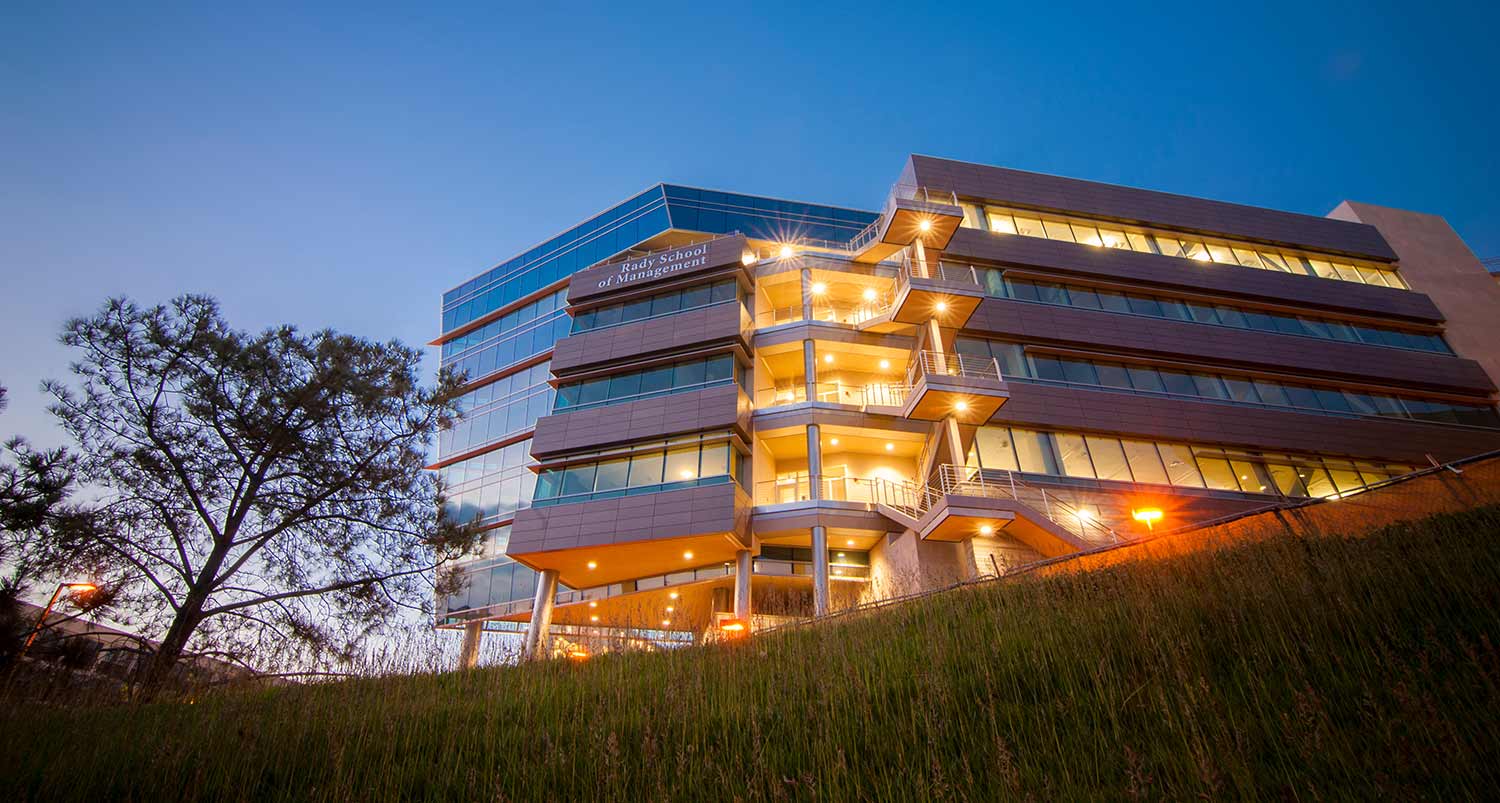Daily Business Report-Sept. 17, 2015
NASA researchers (from left) Martin Hoffman, John Freudinger, and Ed Koshimoto observe one of the FT3 tests from the Research Ground Control Station at NASA Armstrong. (NASA Photo/Ken Ulbrich)
NASA, General Atomics Complete
Third Phase of UAS Flight Testing
Evolving technologies necessary for Unmanned Aircraft Systems (UAS) to safely avoid other aircraft while moving through the nation’s skies recently were put to the test using NASA’s remotely piloted Ikhana aircraft.
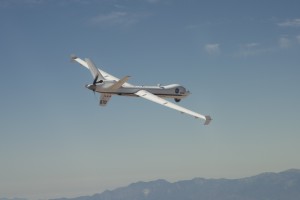
Equipped with a prototype system of Detect-and-Avoid (DAA) sensors working in concert with airborne and ground-based computers, Ikhana made 11 flights involving more than 200 scripted encounters with approaching aircraft.
Depending on the specific scenario, either Ikhana detected one or more approaching aircraft and sent an alert to its remote pilot to take action, or Ikhana itself took action on its own by flying a programmed maneuver to avoid a collision — an aviation first.
“We recorded some valuable data that will take some time to analyze fully, and we expect we’ll need to make some minor refinements to our algorithms, but from what we saw during the tests, the results look promising,” said Dennis Hines, NASA’s director for programs for Armstrong Flight Research Center at Edwards, Calif.
Staged from Armstrong and flown over the high desert of California, the DAA research was designated FT3, the third in a series of flight test campaigns for NASA’s Unmanned Aircraft Systems Integration in the National Airspace System project.
“The successful completion of this flight test campaign represents the maturity of our detect-and-avoid system,” said Frank Pace, president of Aircraft Systems for San Diego-based General Atomics Aeronautical Systems Inc.
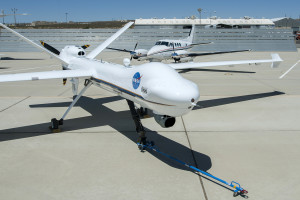
As a NASA industry partner, the company developed one of the three primary DAA sensors flown on Ikhana, in this case a prototype radar system. It also contributed Ikhana system and self-separation and collision avoidance alerting logic software.
The other two sensors included an Automatic Dependent Surveillance-Broadcast (ADS-B) from BAE Systems, and a second generation Traffic alert and Collision Avoidance System (TCAS) from Honeywell International Inc. ADS-B is a satellite-based navigation tool in which an aircraft determines its position and then broadcasts that information, enabling other nearby airplanes equipped with the same tool to know where everyone is at in the sky. As its name implies, TCAS keeps an electronic eye on the sky immediately surrounding an airplane. Should another airplane with a similar device fly too close, an alert will prompt the pilot to take action.
“This phase of flight tests … wouldn’t be possible without the strong partnership that exists between NASA and its aeronautical industry partners,” Hines said.
_________________________________________________________
Scripps Research Institute Receives $5.65M
Gift from Philanthropist Helen Dorris
The Scripps Research Institute (TSRI) has received a $5.65 million gift from Helen Dorris, a San Diego mental health advocate and founder of TSRI’s Dorris Neuroscience Center.
Dorris, who is a San Diego State University professor emeritus, founded a neuroscience center at TSRI in 1999 with a commitment of $10 million. The center was originally named the Harold L. Dorris Neurological Research Center, in her brother’s honor. She later founded TSRI’s Helen L. Dorris Institute for the Study of Neurological and Psychiatric Disorders of Children and Adolescents. The two centers were consolidated in 2010 with an additional gift through The Harold L. Dorris Neuroscience Foundation.
The new gift will enhance the established endowment for the Dorris Neuroscience Center.
The Dorris Neuroscience Center brings together scientists early in their careers with established researchers in the field and provides them with high-end imaging technology and state-of-the-art genomic and genetic research tools to advance their research.
“We are deeply grateful to Helen Dorris and her continued generosity in the support of neuroscience research at TSRI,” said Acting President and CEO James Paulson. “Her gifts help make possible discoveries that deepen our understanding of the nervous system and underscores her belief that neurosciences is at the threshold of advancing new treatments for devastating neurological conditions.”
Pinning Ceremony

Chief Aviation Ordnanceman Misty Beck is pinned by her wife during a chief petty officer pinning ceremony at Naval Air Station North Island. Beck and 20 other chief selectees from six different commands were pinned during the ceremony in the hangar of Fleet Logistics Support Squadron (VRC) 30. (U.S. Navy photo by Mass Communication Specialist 2nd Class Stephanie Smith)
____________________________________________
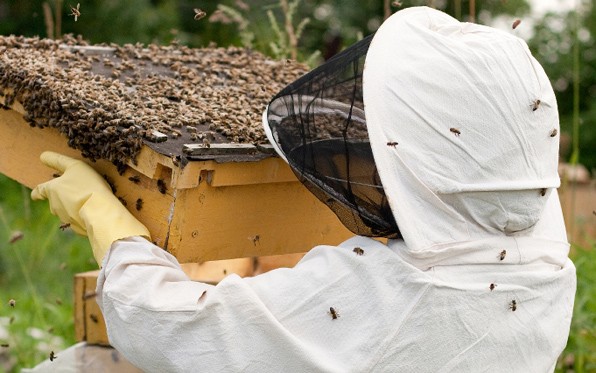
Supervisors Approve New Rules
To Promote Beekeeping, Protect Public
County Supervisors unanimously approved new rules Wednesday that will promote beekeeping and local agriculture while protecting the public.
Supervisors approved a new “tiered” beekeeping ordinance that will allow beekeeping hobbyists and businesses to keep bees and hives closer to roads, property lines and homes in unincorporated areas — but still far enough away to keep people safe.
Bees not only produce honey, they are an essential part of plant reproduction, carrying pollen from plant to plant. Commercial beekeeping businesses pollinate almond, avocado, broccoli, onion, fruit and seed crops across San Diego County.
“Having come from agriculture,” said Board Chairman Bill Horn, “if you don’t have a pollinator, which bees happen to be, you will have no food.”
The county’s Department of Agriculture, Weights and Measures started working to create the tiered beekeeping ordinance at the board’s direction in 2013 with beekeepers, the public and stakeholders, including the San Diego Beekeeping Society, community planning groups and the San Diego County Farm Bureau.
Biologists and beekeepers worldwide have been sounding alarms since 2006 that bees are disappearing, with blame placed on parasitic mites and pesticides. County supervisors wanted to find ways to promote beekeeping, economic development and protect both bees and the public.
The new beekeeping ordinance creates three tiers of distance regulations for beekeepers.
Qualcomm Acquires Capsule Technologie
Qualcomm subsidiary Qualcomm Life Inc. has acquired Capsule Technologie, a global provider of medical device integration and clinical data management platform. Capsule, which has more than 1,930 hospital clients in 38 countries, will become a wholly owned subsidiary of Qualcomm Life. Financial terms were not disclosed.
The acquisition of Capsule extends Qualcomm Life’s connected health offerings into the hospital, ultimately creating a more seamless care continuum from hospital to home and all points in between, the company said.
By combining Qualcomm Life’s wireless expertise and ecosystem of connected medical devices outside of the hospital with Capsule’s leadership for connecting medical devices, EMRs and IT systems across the hospital enterprise, Qualcomm Life is creating one of the world’s largest open connected health ecosystems to deliver intelligent care everywhere, according to the company.
“As health care continues to move into the home and ambulatory settings and outside of traditional care areas such as the hospital, the convergence of medical device data from wherever the patient is located is critically important,” said Gene Cattarina, CEO of Capsule. “Together, Qualcomm Life and Capsule will power this convergence by making data more accessible and interoperable among care teams to provide true continuity of care at the hospital, in the home and at all points in between.”
San Diego Technician Wins
Technician of the Year Award
Mark Michaelson, local San Diego generator technician for Collicutt Energy Services Inc., has won the Electrical Generating Systems Association’s Technician of the Year Award.
The award, presented for the second time, showcases and honors the EGSA-certified generator technician who has gone above and beyond in the on-site power industry in 2015.
Recognizing that generator technicians have not had a formal awards program to showcase their talent and strengths until last year, the TOYA shines a light on those unsung heroes who determinedly give their time and attention to the power generation systems and packaged engineered solutions industries.
Technicians like Michaelson are responsible for servicing, maintaining, selling parts and providing customer assurance. In the industry, technical knowledge is respected and expected, but the ability to think and act under pressure is what separates the elite technicians from the rest.
Collicutt Energy Services is based in Santa Fe Springs.
San Diegan Appointed to
State Rehabilitation Council
Marc Espino, 38, of San Diego, has been appointed to the California State Rehabilitation Council by Gov. Jerry Brown. Espino has been program director at Sycuan Inter-Tribal Vocational Rehabilitation since 2013 and director and owner at Marc Espino Counseling since 2008.
He was a counselor for the Tohono O’odham Nation from 2007 to 2008 and an intensive in-home therapist for the Pascua Yaqui Tribe in 2006. Espino was a sales leader for Victoria’s Secret from 1996 to 2002. He is a member of the Consortia of Administrators for Native American Rehabilitation. Espino earned a Master of Science degree in counseling from the University of Phoenix.
The position does not require Senate confirmation and there is no compensation. Espino is a Democrat.
Sequenom Inks National Coverage
Agreement with UnitedHealthcare
San Diego-based Sequenom has secured a national coverage agreement with UnitedHealthcare for its prenatal diagnostic tests.
The agreement covers Sequenom’s noninvasive prenatal test, MaterniT21 Plus and also its universal and cystic fibrosis carrier screening tests, HerediT Universal and HerediT CF. It will go into effect Oct. 1 and will cover 43 million people throughout the U.S.
Including the agreement with UnitedHealthcare, Sequenom now has more than 200 million lives covered under contract, the company said.
The agreement does not include Sequenom’s newer offerings — its VisibiliT test for screening women with average-risk pregnancies for trisomies 21 and 18; or its MaterniT Genome, a noninvasive test that analyzes chromosomal loss or duplication of greater than 7 megabases across the entire genome.
Scripps and UC San Diego Launch
Consortium to Create ‘Virtual Cell’
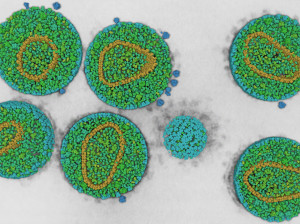
The Scripps Research Institute (TSRI) and the UC San Diego have formed a new consortium with a big mission: to map cells in space and time.
“We are entering into this promising collaboration between our campuses with great optimism,” said TSRI Acting President and CEO Jim Paulson. “The Visible Molecular Cell Consortium aims to bring together the best minds from different disciplines to understand and articulate how the body’s cells work, which will lay important groundwork to understanding health and disease.”
“Leveraging existing strengths at UC San Diego and Scripps, the collaboration will advance scientific excellence and research infrastructure at both institutions,” said Pradeep K. Khosla, chancellor of UC San Diego. “The goal of building virtual cells poses an important challenge to researchers in fields from experimental biology to computation and information analysis.”
The Visible Molecular Cell Consortium will be directed jointly by TSRI Professor Art Olson and UC San Diego Associate Professor of Chemistry and Biochemistry Rommie Amaro.
The consortium will offer fellowship funding for some 10 to 12 graduate students and postdoctoral fellows to work on collaborative projects that build bridges between the campuses and different disciplines to assemble and simulate a virtual model of a cell, down to an atomic level of detail.

